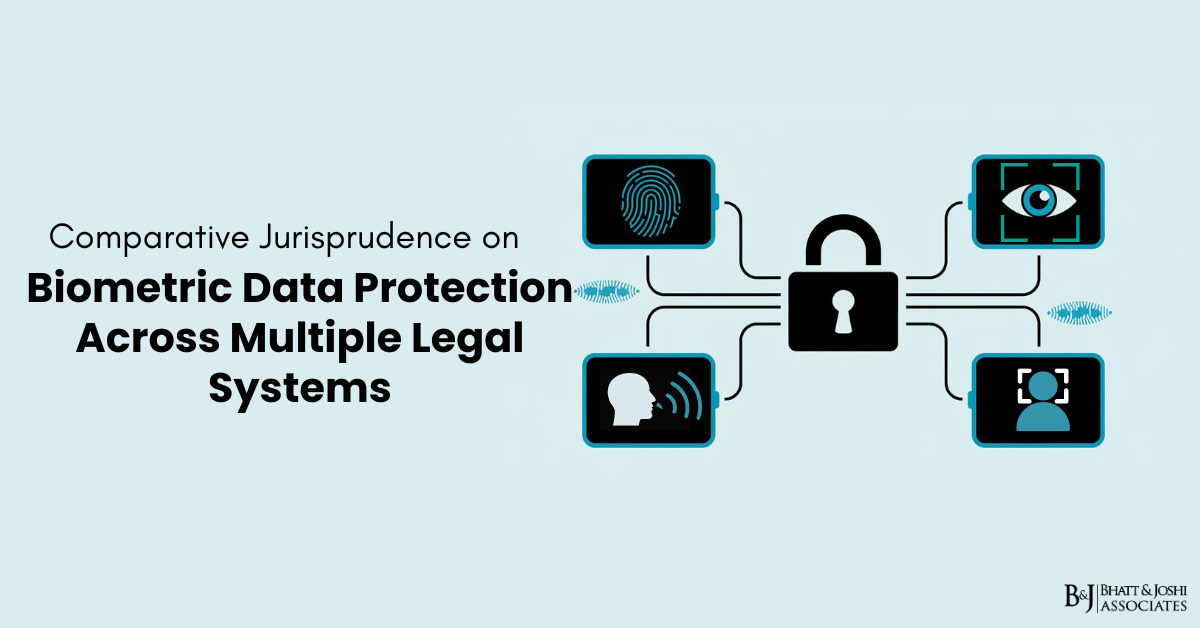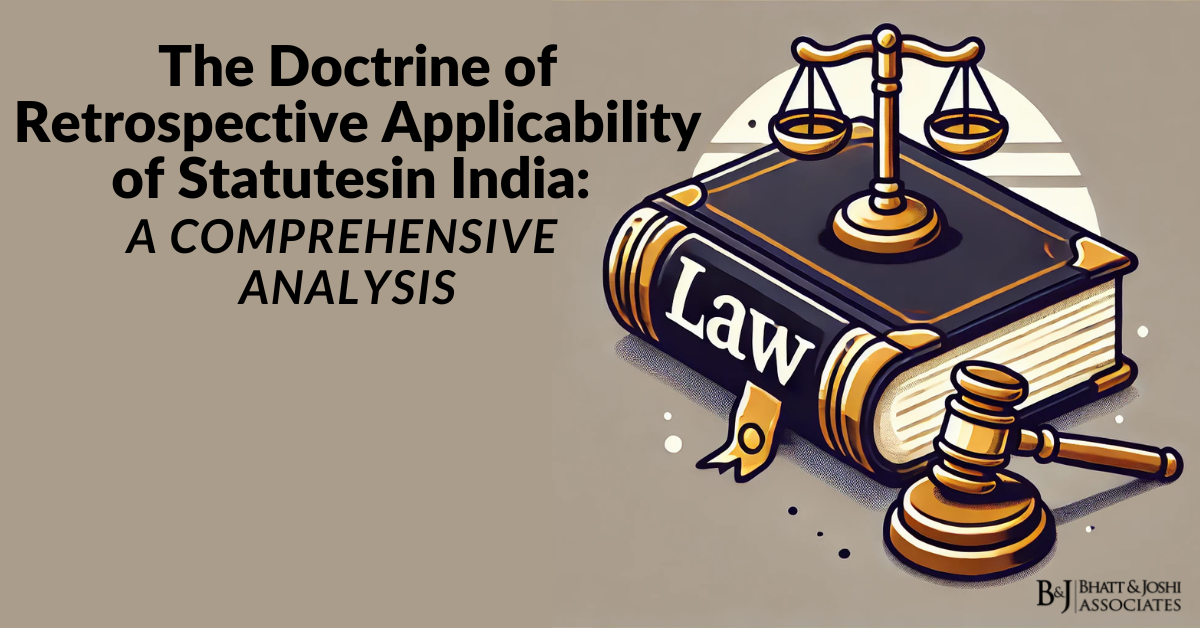
Introduction
In an era marked by rapid technological advancements, the protection of personal data has become a cornerstone of privacy rights. Among the various types of personal data, biometric data stands out due to its unique characteristics and the profound implications of its misuse. Biometric data includes inherently personal information such as fingerprints, facial recognition patterns, iris scans, voiceprints, and DNA sequences. These identifiers are increasingly being utilized for various purposes, ranging from security and law enforcement to healthcare and consumer services. However, the collection, storage, and use of biometric data pose significant privacy risks, as biometric identifiers are immutable and intrinsically linked to an individual’s identity. Unlike passwords or PINs, biometric data cannot be changed if compromised, making its protection paramount. Legal frameworks across the globe have sought to address these concerns, albeit with varying degrees of stringency and effectiveness. This article embarks on a comprehensive exploration of the comparative jurisprudence on biometric data protection across multiple legal systems, focusing on key jurisdictions such as the European Union (EU), the United States (US), India, and Australia. By examining the legislative frameworks, judicial interpretations, and enforcement mechanisms in these regions, the article aims to provide a thorough analysis of how different legal systems address the challenges posed by biometric data and the implications for global data protection standards.
Historical Context of Biometric Data and Privacy Law
The use of biometric data dates back to ancient civilizations, where physical characteristics were often used for identification purposes. For instance, fingerprints were used on clay tablets in ancient Babylon to seal business transactions. However, the modern legal recognition of biometric data as a distinct category of personal data deserving of special protection is a relatively recent development.
The late 20th and early 21st centuries witnessed a surge in the use of biometric technologies, driven by advancements in computing power and digital storage capabilities. Governments and private entities began to adopt biometric systems for various purposes, including border control, law enforcement, and customer authentication. As the use of biometric data proliferated, so did concerns about its potential misuse, leading to the emergence of legal frameworks aimed at safeguarding this sensitive information.
The adoption of comprehensive data protection laws, such as the General Data Protection Regulation (GDPR) in the European Union, marked a significant milestone in the evolution of privacy law. The GDPR, which came into effect in 2018, explicitly recognizes biometric data as a “special category” of personal data, subject to heightened protection due to its sensitive nature. This recognition has influenced the development of data protection laws in other jurisdictions, setting a global standard for the regulation of biometric data.
Biometric Data Protection in the European Union
The European Union (EU) has been a pioneer in the development of robust data protection laws, with the General Data Protection Regulation serving as a model for many other jurisdictions. Under the General Data Protection Regulation, biometric data is classified as “special category data,” which requires enhanced protection due to its potential to uniquely identify an individual. Article 9 of the General Data Protection Regulation specifically prohibits the processing of biometric data for the purpose of uniquely identifying an individual, unless one of several exceptions applies, such as explicit consent, necessity for employment, or reasons of substantial public interest.
The General Data Protection Regulations approach to biometric data is grounded in several key principles, including transparency, purpose limitation, data minimization, and the right to data portability. These principles are designed to ensure that individuals have control over their biometric data and that organizations processing such data do so in a manner that respects individuals’ privacy rights.
Transparency: The GDPR requires organizations to be transparent about their collection, use, and storage of biometric data. This includes providing clear and accessible information to individuals about the purposes for which their biometric data is being processed, the legal basis for such processing, and the rights available to them under the GDPR.
Purpose Limitation: The principle of purpose limitation mandates that biometric data must only be collected for specific, explicit, and legitimate purposes. Once collected, the data cannot be further processed in a manner that is incompatible with these purposes unless additional consent is obtained.
Data Minimization: The GDPR requires that organizations collect only the minimum amount of biometric data necessary for the specified purposes. This principle is particularly important in the context of biometric data, given its sensitivity and the potential risks associated with its misuse.
Data Portability: The right to data portability allows individuals to obtain and reuse their biometric data across different services. This right is intended to enhance individuals’ control over their data and facilitate greater interoperability between different biometric systems.
The GDPR also imposes strict security requirements on organizations processing biometric data. These requirements include the implementation of appropriate technical and organizational measures to protect the data from unauthorized access, alteration, or disclosure. Organizations are also required to conduct regular security assessments and implement measures such as encryption and anonymization to mitigate the risks associated with biometric data processing.
In addition to the General Data Protection Regulation, the European Court of Human Rights (ECHR) has played a significant role in shaping the jurisprudence on biometric data protection. In cases such as S. and Marper v. the United Kingdom, the ECHR has emphasized the importance of balancing public security interests with individual privacy rights. This landmark case involved the retention of DNA profiles and fingerprints of individuals who had been acquitted of crimes. The ECHR ruled that the indefinite retention of such biometric data constituted a violation of the right to privacy under Article 8 of the European Convention on Human Rights. This decision set an important precedent for the regulation of biometric data, underscoring the need for proportionate and justified use of such data by public authorities.
Biometric Data Protection in the United States
The United States adopts a more fragmented approach to data protection, with a patchwork of federal and state laws governing the regulation of biometric data. Unlike the EU, the US does not have a comprehensive federal data protection law. Instead, biometric privacy laws in the US are governed by a combination of sector-specific regulations and state-level legislation.
Federal Regulations: At the federal level, laws such as the Health Insurance Portability and Accountability Act (HIPAA) and the Gramm-Leach-Bliley Act (GLBA) provide some protection for biometric data in specific contexts, such as healthcare and financial services. HIPAA, for example, imposes strict requirements on the collection, use, and disclosure of biometric data in the healthcare sector. However, these laws do not provide broad protection for biometric data across all sectors.
State-Level Legislation: Illinois has been a pioneer in biometric data protection with the enactment of the Biometric Information Privacy Act (BIPA) in 2008. BIPA imposes strict requirements on private entities that collect biometric data, including obtaining written consent, informing individuals of the purpose and duration of data collection, and implementing safeguards to protect the data. BIPA also provides a private right of action, allowing individuals to sue for violations, which has led to a significant amount of litigation and has influenced other states to consider similar legislation. The effectiveness of BIPA lies in its enforcement mechanism, which empowers individuals to hold organizations accountable for non-compliance.
California’s Consumer Privacy Act (CCPA), which took effect in 2020, also includes provisions related to biometric data, classifying it as a category of personal information that is subject to enhanced privacy rights and protections. The CCPA grants consumers the right to access, delete, and opt out of the sale of their biometric data, reflecting the growing importance of biometric data in the broader landscape of data privacy law. However, unlike BIPA, the CCPA does not provide a private right of action for biometric data breaches, limiting its enforceability to actions by the Attorney General.
Litigation and Judicial Interpretations: The US legal landscape regarding biometric data protection is heavily influenced by litigation, particularly under BIPA. Several high-profile cases have shaped the interpretation and enforcement of BIPA, including issues related to the definition of “biometric identifiers,” the requirements for consent, and the applicability of BIPA to emerging technologies. For example, in Rosenbach v. Six Flags Entertainment Corp., the Illinois Supreme Court ruled that individuals do not need to demonstrate actual harm to bring a claim under BIPA, thereby lowering the threshold for litigation and enhancing the law’s deterrent effect.
The US approach to biometric data privacy, while more fragmented and less comprehensive than the EU’s GDPR, reflects a growing recognition of the need to regulate the collection and use of biometric data. However, the lack of a unified federal framework has led to inconsistencies in the level of protection afforded to individuals across different states and sectors.
Biometric Data Protection in India
India’s approach to biometric data privacy laws is evolving, especially following the Supreme Court’s landmark decision in Justice K.S. Puttaswamy (Retd.) and Anr. v. Union of India and Ors., which recognized the right to privacy as a fundamental right under the Indian Constitution. This decision has significantly impacted the regulation of biometric data, particularly regarding the Aadhaar system, the world’s largest biometric identification system.
The Aadhaar System and Legal Scrutiny: The Aadhaar Act, 2016, governs the collection and use of biometric data for the Aadhaar system, which assigns a unique 12-digit identification number to Indian residents based on their biometric and demographic data. The Aadhaar system has been the subject of intense legal scrutiny, with critics raising concerns about the potential for misuse of biometric data by both public and private entities, as well as the adequacy of the legal safeguards in place.
The Supreme Court’s decision in the Aadhaar case (2018) upheld the constitutionality of the Aadhaar system but imposed several restrictions on its use. The Court ruled that the mandatory linking of Aadhaar with services such as bank accounts and mobile phone connections was unconstitutional, and that the use of Aadhaar by private entities required explicit consent. The Court also emphasized the need for robust data protection measures, including restrictions on data sharing and requirements for data security.
The Personal Data Protection Bill, 2019: The Personal Data Protection Bill, 2019, which is currently under consideration by the Indian Parliament, is expected to provide a more comprehensive legal framework for data protection, including biometric data. The Bill proposes to classify biometric data as “sensitive personal data,” subject to stringent requirements for processing, including explicit consent and enhanced security measures. The Bill also establishes the Data Protection Authority of India, which will be responsible for enforcing the law and ensuring compliance with data protection standards.
The Bill draws heavily from the GDPR, incorporating principles such as purpose limitation, data minimization, and data portability. However, the Bill also includes provisions that have raised concerns about the potential for government overreach, such as the broad exemptions granted to the government for the processing of personal data in the interests of national security and public order. The balance between individual privacy rights and state interests will be a key issue as the Bill moves through the legislative process.
Biometric Data Protection in Australia
Australia’s approach to biometric data protection is primarily governed by the Privacy Act, 1988, which regulates the handling of personal information by government agencies and private organizations. Under the Privacy Act, biometric data is classified as “sensitive information,” which is subject to higher levels of protection than other types of personal information.
The Australian Privacy Principles (APPs): The Australian Privacy Principles (APPs), which are set out in the Privacy Act, provide the framework for the collection, use, and disclosure of biometric data. APP 3, for example, requires organizations to obtain consent before collecting biometric data, unless an exception applies, such as where the collection is required by law. APP 11 requires organizations to take reasonable steps to protect biometric data from misuse, interference, and loss, as well as unauthorized access, modification, or disclosure.
The APPs emphasize the importance of transparency, accountability, and individual rights in the handling of biometric data. Organizations are required to have a clear and publicly available privacy policy that outlines their practices regarding the collection and use of biometric data. Individuals also have the right to access and correct their biometric data, as well as to lodge complaints if they believe their data has been mishandled.
Enforcement and Guidance by the OAIC: Australia’s Office of the Australian Information Commissioner (OAIC) plays a key role in enforcing the Privacy Act and ensuring compliance with the APPs. The OAIC has issued guidance on the use of biometric data, emphasizing the importance of transparency, consent, and data security. The OAIC also has the power to investigate complaints and take enforcement action against organizations that breach the Privacy Act, including the imposition of fines and other penalties.
The OAIC’s enforcement powers were enhanced by amendments to the Privacy Act in 2014, which introduced mandatory data breach notification requirements and increased penalties for serious or repeated breaches of privacy. These amendments have strengthened the regulatory framework for biometric data protection in Australia and have contributed to a greater awareness of privacy issues among both organizations and the public.
Judicial Interpretations and Key Case Law
Judicial interpretations of biometric data protection laws have been critical in shaping the legal landscape across different jurisdictions. Courts have grappled with issues such as the definition of biometric data, the scope of consent, the balance between privacy and security, and the enforcement of data protection rights.
European Union: In the European Union, the Court of Justice of the European Union (CJEU) has issued several important rulings on biometric data protection, including cases that address the compatibility of national laws with the GDPR, the interpretation of consent requirements, and the scope of data subject rights. For example, in the case of Schrems II, the CJEU invalidated the EU-US Privacy Shield, which had allowed for the transfer of personal data, including biometric data, between the EU and the US. The Court ruled that the Privacy Shield did not provide adequate protection for EU citizens’ data, particularly in light of US surveillance laws, setting a precedent for the stringent protection of biometric data in cross-border contexts.
United States: In the United States, courts have been active in interpreting BIPA, particularly in relation to the requirements for consent, the statute of limitations, and the availability of damages for violations. In the case of Rosenbach v. Six Flags Entertainment Corp., the Illinois Supreme Court ruled that individuals do not need to demonstrate actual harm to bring a claim under BIPA, thereby lowering the threshold for litigation and enhancing the law’s deterrent effect. This ruling has had a significant impact on the enforcement of BIPA, leading to a surge in litigation and prompting other states to consider similar legislation.
India: In India, the Supreme Court’s decision in the Aadhaar case has been pivotal in defining the legal standards for biometric data protection, particularly in relation to the right to privacy and the proportionality of data collection. The Court’s ruling emphasized the need for robust safeguards to protect biometric data, including restrictions on data sharing, requirements for data security, and the necessity of obtaining explicit consent for the use of Aadhaar by private entities.
Australia: Australian courts have also contributed to the development of biometric data protection law, particularly in cases that address the application of the Privacy Act to new technologies and the interpretation of the APPs. For example, in Privacy Commissioner v Telstra Corporation Limited, the Federal Court of Australia ruled that metadata, including biometric data, could constitute personal information under the Privacy Act, thereby extending the scope of the Act’s protections.
Challenges and Future Directions
Despite the progress made in developing legal frameworks for biometric data protection, significant challenges remain. These challenges include the rapid pace of technological change, the global nature of data flows, the potential for misuse of biometric data by both public and private entities, and the difficulty of enforcing data protection laws across borders.
Technological Advancements: One of the key challenges is ensuring that legal frameworks keep pace with technological developments. As new biometric technologies emerge, such as facial recognition, voice recognition, and behavioral biometrics, legal systems must adapt to address the unique privacy risks posed by these technologies. This may require updates to existing laws, the development of new regulations, and the adoption of best practices for data protection.
Global Data Flows: Another challenge is the need for greater international cooperation on biometric data protection. As biometric data is increasingly shared across borders for purposes such as law enforcement, immigration, and commerce, there is a growing need for harmonized legal standards and enforcement mechanisms. International agreements, such as the EU-US Privacy Shield, and global initiatives, such as the OECD Guidelines on the Protection of Privacy and Transborder Flows of Personal Data, provide a foundation for this cooperation, but more work is needed to ensure the effective protection of biometric data in a globalized world.
Regulatory Enforcement: The enforcement of biometric data protection laws remains a significant challenge, particularly in jurisdictions with limited resources or weak regulatory frameworks. Ensuring that organizations comply with legal requirements and that individuals’ rights are upheld will require stronger enforcement mechanisms, including the imposition of penalties for non-compliance and the provision of adequate resources to regulatory authorities.
Public Awareness and Education: Finally, raising public awareness and educating individuals about their rights in relation to biometric data is crucial for the effective protection of privacy. Governments, regulatory authorities, and civil society organizations must work together to ensure that individuals are informed about the risks associated with biometric data and the legal protections available to them.
Conclusion
Biometric data protection is a complex and rapidly evolving area of law, with significant implications for privacy, security, and individual rights. The comparative jurisprudence on biometric data protection across multiple legal systems reveals a diversity of approaches, reflecting different legal traditions, cultural values, and policy priorities. While there is no one-size-fits-all solution to the challenges posed by biometric data, the experiences of different jurisdictions offer valuable lessons for the development of effective legal frameworks.
As the use of biometric data continues to grow, it is essential that legal systems remain vigilant in protecting the privacy and security of individuals. This will require ongoing efforts to update legal frameworks, enhance enforcement mechanisms, and promote international cooperation. By doing so, we can ensure that the benefits of biometric data are realized without compromising the fundamental rights and freedoms that underpin our societies.
In conclusion, the evolving landscape of biometric data protection underscores the need for a balanced approach that safeguards privacy while accommodating the legitimate interests of security, commerce, and innovation. As legal systems continue to grapple with the complexities of biometric data, it is imperative that lawmakers, regulators, and courts remain attuned to the rapidly changing technological environment and the associated risks to individual privacy.













